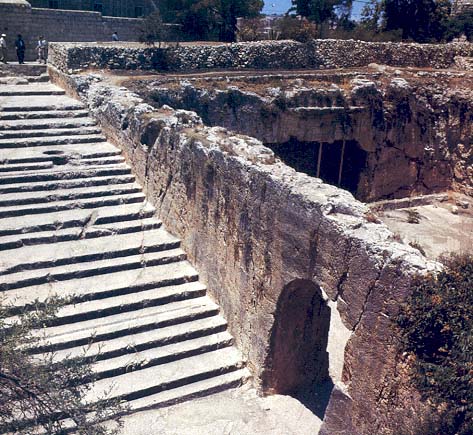Fit for a Queen
Sidebar to: Did a Rolling Stone Close Jesus’ Tomb?

Not a king, but a queen was interred at the site known as the Tombs of the Kings, situated north of the Old City of Jerusalem (see artist’s reconstruction, next image). The 19th-century excavator L.F. Caignart de Saulcy believed that the impressive complex must have been built for the kings of Judah. Today, the site is generally identified as the final resting spot of Queen Helena of Adiabene (a kingdom on the Upper Euphrates). It remains one of Jerusalem’s most elaborate cave tombs from the late Second Temple period (first century B.C.E. to 70 C.E.). Attesting to the tomb’s grandeur, a monumental stairway (top photo) leads down to the tombs. In ancient times, water collected from the stairs was conducted into two large cisterns near the foot of the steps. From the bottom of the steps, an arched entryway leads into a spacious sunken courtyard. At the western end, a 36-foot-wide entryway (photo below), originally supported by columns, opened onto the tomb’s anteroom, built in the architectural style known as distyles in antis, meaning “two-pillared porch.”
Already a library member? Log in here.
Institution user? Log in with your IP address.

